A fair six-sided die has the digits on its faces.
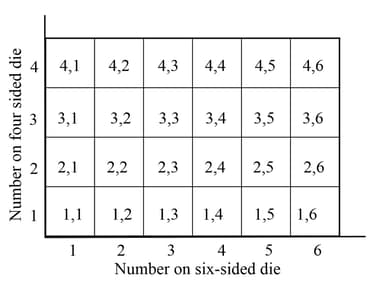
A fair four-sided die has the digits on its faces.
The two dice are rolled simultaneously. The diagram represents the sample space of the possible outcomes.
Let be the event 'rolling a on the four-sided die', and be the event 'rolling a on the six-sided die. Find , the probability that you roll a on the four-sided die and a on the six-sided die.


Important Questions on Independent Events and Conditional Probability
A fair six-sided die has the digits on its faces.
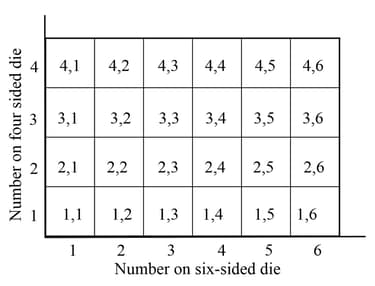
A fair four-sided die has the digits on its faces.
The two dice are rolled simultaneously. The diagram represents the sample space of the possible outcomes.
Let be the event 'rolling a on the four-sided die', and be the event 'rolling a on the six-sided die. Explain whether or not the events are independent.
A fair six-sided die has the digits on its faces.
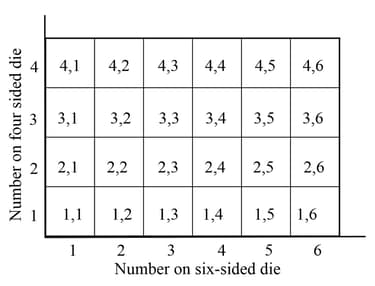
A fair four-sided die has the digits on its faces.
The two dice are rolled simultaneously. The diagram represents the sample space of the possible outcomes.
Let be the event 'rolling a on the four-sided die', and be the event 'rolling a on the six-sided die. Explain whether or not the events are independent. Verify your result using the multiplication rule.
A red die has faces numbered and a green die has faces numbered and . Let be the event 'rolling a on the red die'. Let be the event 'rolling a on the green die'. Calculate the probability of rolling a on both the red die and the green die.
A red die has faces numbered and a green die has faces numbered and . Let be the event 'rolling a on the red die'. Let be the event 'rolling a on the green die'. Calculate the probability of rolling a on both the red die and the green die. Explain whether or not these events are independent.
A red die has faces numbered and a green die has faces numbered and . Let be the event 'rolling a on the red die'. Let be the event 'rolling a on the green die'. Calculate the probability of rolling a on both the red die and the green die. Explain whether or not these events are independent. Verify your result using the multiplication rule.
Here is a standard set of dominos.
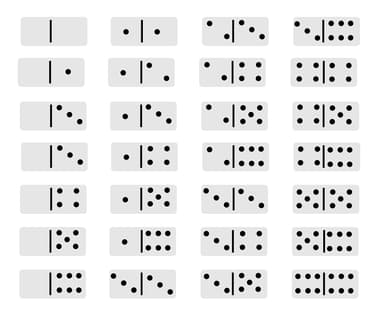
One domino is selected at random. It is then replaced and a second domino is drawn at random. If is the set of outcomes of selecting dominos, write down .
Here is a standard set of dominos.
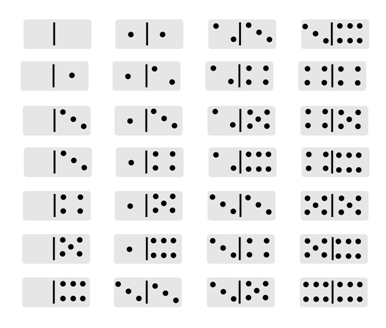
One domino is selected at random. It is then replaced and a second domino is drawn at random. If is the set of outcomes of selecting dominos, write down . Let be the event 'at least one of the values on the first domino is a six' and be the event 'the second domino is a double' (both values are the same). Explain whether or not these events are independent.
Here is a standard set of dominos.

One domino is selected at random. It is then replaced and a second domino is drawn at random. If is the set of outcomes of selecting dominos, write down . Let be the event 'at least one of the values on the first domino is a six' and be the event 'the second domino is a double' (both values are the same). Explain whether or not these events are independent. Verify your answer using the multiplication rule.
